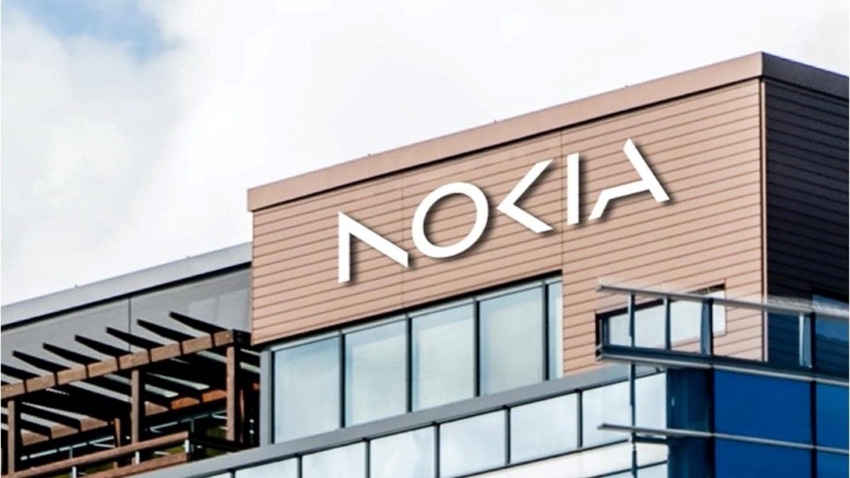Nokia turns to Google's AI to give network APIs a boost
Nokia hopes to make accessing APIs easier for developers through Google Cloud partnership and AI, with the technology yet to gain traction.

Application programming interfaces (APIs) have long been touted as a way for telcos to reap some financial benefit from their massive 5G splurge. One of the companies trying to make this happen is Nokia – which one might imagine feels rather invested in the outcome of telcos' monetization plight – through its Network as Code platform.
During the recent DTW Ignite event in Copenhagen, Light Reading spoke to Nokia's head of network monetization platform business units, Shkumbin Hamiti, about Network as Code and the recently announced partnership with Google Cloud.
APIs are bits of software through which telcos want to expose network capabilities to developers. The hope is that developers will pay enough for these capabilities to boost sales. Some examples include device localization and authentication.
Nokia's partnership will see the Network as Code platform run on Google Cloud, Hamiti said, and leverage Google products including the machine learning technology Vertex AI, as well as the AI model Gemini 1.5 Pro, to "enrich developer experience with generative AI capabilities."
Decent exposure
The main idea behind the partnership, Hamiti said, was to make APIs available to the Google developer community. "We will have more developers, developers who would otherwise not have access to network APIs that suddenly now see they can use these APIs or that SDK [software development kit] to do things they couldn't before," he said about the partnership and how it can help expose APIs to developers.
As for generative AI, Hamiti said it can help developers write code and answer questions related to the product documentation. He also said that Nokia's engineers may consider adding more advanced use cases.
When asked who handles the customer relationship in the partnership, Hamiti said "it really depends."
"In a normal kind of Google developer case, who has the customer relationship, right? It's typically the developer who will develop that application for their customers, right? So it depends who you call a customer. In that case, it's just a normal way of operating with the Google developers," he added.
He gave a similar reply when asked if Google will act as an aggregator. "I think this is a matter of definition of what the aggregator is," he said, adding: "If you say that I can aggregate on top by bringing developers together, yes, we could say that."
"What we call an aggregator is going operator by operator in getting access to the network assets from the south, as we call it," he said. "From our side, that's the definition of aggregation."
Starting with healthcare
In the first instance, the partnership will target applications in the healthcare industry. Nokia has been working with partners and determined that certain use cases in the healthcare industry may benefit from various network features, said Hamiti. In the case of patients suffering from Alzheimer's disease, for example, "you want to make sure that they don't move outside of a certain area or if they move outside of a certain area that the healthcare professional is informed," he said.
In the long run, however, Nokia will target all the verticals it's working in, such as transportation, logistics and oil and gas. Whether specific use cases will be made public will depend on the customers, said Hamiti.
He also noted that a lack of contact with other industries is one of the main challenges when it comes to scaling APIs. Companies could address this, in his view, by attending events for other sectors, such as oil and gas conferences.
The main obstacles to scaling APIs are not technical, but have more to do with telcos' mindset, according to Hamiti. "We own everything and, you know, my network is best, I want to do it on my own," is the conventional thinking, he said.
He is, however, optimistic about the outlook, saying there are signs of cooperation between operators to make APIs more appealing to developers.
In the long run, the interest of the developer community will be key to the success of APIs. In this regard, Nokia's Network as Code looks more promising than its main competitor, Ericsson's Vonage, according to analyst firm Analysys Mason, which believes Nokia's partnerships with systems integrators like Kynryl and Innova give it the advantage.
Yet some analysts have questioned the revenue potential of APIs for the telecom industry, while Ericsson's investment in Vonage has not yet reaped the benefits the vendor had hoped for.
Remote driving
Speaking about real-world examples of APIs being deployed, Hamiti highlighted in particular solutions that improve network quality on demand. One of these is Nokia's partnership with Estonian remote driving company Elmo, which has developed and deployed remote driving technology in Estonia, Lithuania and Finland for the delivery of rental cars.
The companies have demonstrated a service on demand solution that allows the driver to press a button that improves connection quality when the network is congested.
APIs have also been used in the port of Antwerp. Currently, a human pilot needs to get into a small boat and join a large ship as it nears the port due to congestion and the complexity of navigating the area. There are currently as many as 50,000 ships going in and out of the port a year.
Here, Nokia has partnered with Liberty Global to use APIs and SDKs for remote piloting of ships. When a ship enters a certain area, Hamiti said, it triggers a request for a high-quality 5G connection for the duration of the ship's maneuvering and then releases the resource.
The solution was deployed together with shipping company Seafar NV and imec, a research and innovation hub for nanoelectronics and digital technologies in a trial that was announced earlier this year.
This particular project uses network slicing via Telenet's 5G standalone network, but Hamiti admitted not all quality-of-service API use cases may need slicing. Some could work with 5G non-standalone technology, or even on good old 4G – although Hamiti maintained that 5G standalone will offer the best experience.
Read more about:
EuropeAbout the Author(s)
You May Also Like



.jpeg?width=700&auto=webp&quality=80&disable=upscale)










